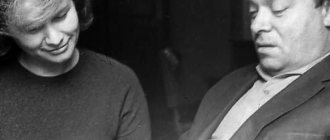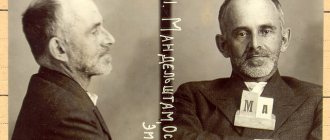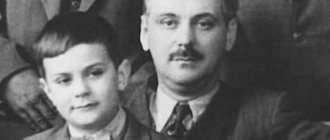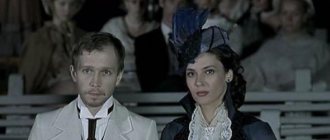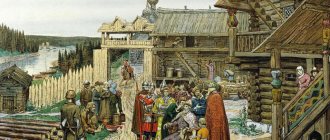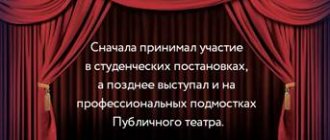Konstantin Dmitrievich Balmont is a critic, translator, essayist and one of the most prominent figures of the Silver Age of Russian poetry. A man who spent his whole life struggling with black melancholy and melancholy, but despite this, wrote wonderful poems about the beauty and fragility of the world around us.
His contemporaries loved and revered him, his parents did not understand him, the authorities despised him and subjected him to merciless censorship. He, like a migratory bird, darted around the world in search of peace of mind and did not find it anywhere. Balmont's biography is tragic and full of interesting facts. They will be discussed below.
Childhood
Konstantin Dmitrievich Balmont was born on June 15, 1867 in the village of Gumnishchi in the Vladimir province. His family was, albeit from a poor family, but still a noble family. Father Dmitry Konstantinovich Balmont served in Shuisky district, first as a justice of the peace, and then as chairman of the zemstvo council. Mother, Vera Nikolaevna Lebedeva, was passionate about literature and devoted almost all her free time to it. In many ways, it was she who instilled in her son a love of fiction—indirectly setting him on the path that he would follow for the rest of his days.
Young Balmont began reading early - already at the age of 5. The youngest child in the family, he often spied on how his mother taught his brothers to read and write, and so little by little he mastered it himself. Touched and at the same time surprised by his son’s success, his father gave him his first book. Unfortunately, he made a bad choice. Years later, Balmont did not remember anything about her - he only said “something about the savages of the Oceanians.”
The mother, on the contrary, approached the issue competently and introduced the boy to the famous classics of folk poetry: Nikitin, Koltsov, Nekrasov, Pushkin and Lermontov. The latter’s “mountain peaks” became the standard for Constantine - his muse and guiding star. Even having established himself as a poet and personality, he still called them his favorite poems.
When the time came to send the children to school, the family moved to the town of Shuya, where Balmont entered the preparatory class of the local gymnasium. The boy’s studies somehow didn’t work out right away: he quickly became bored with it, and as a result, he spent his leisure time voraciously reading fiction. At the age of 10, Konstantin himself tried his hand at writing - he composed his first two, naive poems, one of which he dedicated to summer, and the other to winter.
The inspired Balmont shows them to their mother, but instead of approval and support, he only encounters harsh criticism and bewilderment. Vera Nikolaevna stops her son's further attempts to write in the bud, and over the next 6 years he - crushed by his loved one - no longer thinks about a career as a poet.
In 1884, Balmont was expelled from the gymnasium. A good reason for this is his membership in an illegal circle and campaigning activities in support of the Narodnaya Volya revolutionary party.
Later the poet would explain his early rebellious mood this way:
“I was happy, and I wanted everyone to feel just as good. It seemed to me that if it was good only for me and a few, it was ugly.”
Thanks to his mother’s acquaintances and influence, Balmont was transferred to the gymnasium in the city of Vladimir. This is where a new chapter begins in the life of the future poet.
Poet's debut
Having moved to Vladimir, Konstantin finds himself in the care of his Greek teacher, who nominally acts as his mentor, but in fact only makes sure that the boy diligently attends classes and does not bother himself with all sorts of nonsense. Therefore, when in 1885 three poems by Balmont were published in the St. Petersburg magazine “Picturesque Education”, he again received a severe reprimand. He is forbidden to write until he graduates from high school.
Around the same time, a notebook with Konstantin’s poems miraculously fell into the hands of the famous public figure and publicist Vladimir Korolenko. He sees potential in the young poet and even addresses him a letter - a serious, detailed one, in which he advises not to stray from the chosen path and rely more on his own experiences and feelings rather than on a cool mind. The message ended on a good note - Korolenko believed that someday Balmont would give the world something extraordinary. In fact, this becomes the first recognition for the boy, proof that he really has literary talent.
Vladimir Korolenko and Konstantin Balmont
In 1886, Balmont entered the Faculty of Law at Moscow University, made close acquaintance with the revolutionaries of the sixties, and a year later he was miserably expelled from the educational institution for participating in the riots. Moreover, he is arrested and sent to Butyrskaya prison for three days, after which he is sent to his native Shuya without trial or investigation. In 1888, he returned to the lyceum, but history repeated itself, and he was expelled again - this time, however, for banal poor academic performance. Tired of futile attempts to get a “government education,” the young man decides to give it up.
Less than two years pass before Balmont meets Larisa Mikhailovna Garelina, the daughter of an ordinary Voznesenovsky merchant. They begin an affair, and soon, after a few months, they decide to get married. Parents, especially his mother, oppose this marriage, but Konstantin goes against them, which is why he loses financial custody and the last crumbs of affection. Of course, this leads to the most tragic consequences.
The couple lives in need and poverty, and all their modest savings are spent on publishing the first collection of Balmont’s poems, which is greeted more than coolly by people close to the writer. It does not arouse any interest at all among the general Russian public. Unhappy Konstantin falls into despair - he burns the entire remaining circulation, quarrels with his wife, and in March 1890 throws himself out of a third-floor window, wanting to commit suicide. Unsuccessfully. The young man receives serious injuries, but remains alive and spends the next year bedridden.
It would seem that a series of mistakes and failures should have broken Konstantin. However, exactly the opposite happened. Having recovered from his illness, Balmont experiences catharsis - he finally accepts himself as a poet and radically changes his approach to literature. If earlier she was just a hobby for him, now she becomes the purpose of his existence - his daily bread.
Thanks to the help of Vladimir Korolenko and Moscow University professor Nikolai Storozhenko, Balmont somehow stays afloat, making money by translating such monumental works as “The History of Scandinavian Literature” by F. V. Gorn and “The History of Italian Literature” by Gaspari. Along the way, in his free time from work, he writes - he writes actively, passionately, frantically, which he has never done before. For the first time, he is truly happy and doing what he loves with all his heart.
In 1894, a new collection of Balmont’s poems, “Under the Northern Sky,” was published. Unlike the previous book, it immediately finds a positive response and becomes the starting point for the poet's career. Although critics grumble about a certain secondary nature, they still praise the young debutant for his talent and elegance of style.
Biography
Childhood
Balmont's father, Dmitry Konstantinovich, served as a collegiate registrar, a justice of the peace, and chairman of the zemstvo government in his native district. Her mother, Vera Nikolaevna (nee Lebedeva), was the daughter of a general, loved literature, was published in the local press, and was an organizer of literary evenings and amateur performances. It was she who influenced the worldview of little Konstantin, introducing him from an early age to music, literature, and history. There were 7 brothers in the family, the third of whom was the future poet.
Education
In 1876, Balmont was sent to the Shuya gymnasium. In 1884, he was expelled from the 7th grade for participating in a dubious circle that supported the Narodnaya Volya. His mother transferred him to the Vladimir gymnasium, from which he graduated in 1886. In the same year, Balmont became a student at the Faculty of Law at Moscow University, but a year later he was not only expelled for participating in revolutionary circles, but also exiled to Shuya. In 1889, he was reinstated at the university, but was unable to study there due to nervous exhaustion. He was also expelled from the Yaroslavl Demidov Lyceum of Legal Sciences in 1890.
Creative path
Balmont's first literary debut as a poet took place in 1885, when he was finishing high school. However, his poems, published in the famous St. Petersburg magazine “Picturesque Review,” were not noticed. In 1890, using his own funds, Balmont published his own collection of poems, which also had no success.
By that time, Balmont was already married, because of his marriage he seriously quarreled with his parents and found himself without a means of subsistence. In March 1890, he attempted to commit suicide by throwing himself out of a third-floor window. He survived, but received many bruises and injuries that confined him to bed for a whole year.
After a long illness, the writer V. G. Korolenko and Moscow University professor N. I. Storozhenko helped him get back on his feet. He started working as a translator. In 1894–1895, his translations of “The History of Scandinavian Literature” by Horn-Schweitzer and “The History of Italian Literature” by Gaspari were published, on the fees from which he lived comfortably for several years.
In 1892, Balmont met Merezhkovsky and Gippius in St. Petersburg, and in 1894, Bryusov, who became his closest friend. In 1894, a collection of Balmont’s poems was published, which became the starting point of his work - “Under the Northern Sky”. Poetic searches continue in the poet’s next collection, “In the Boundless,” which was published in 1895.
In 1896, with his new wife, Balmont went on a trip to Western Europe.
He is becoming popular. In 1899 he was elected a member of the Society of Lovers of Russian Literature.
Thanks to the 1900 collection “Burning Buildings,” Konstantin Dmitrievich gained all-Russian fame and became one of the leaders of symbolism. The poet’s position was strengthened by the 1902 collection “Let’s Be Like the Sun.”
In 1901, Balmont had a conflict with the authorities. At one evening he read a poem directed against Nicholas II and was expelled from the capital for this.
In 1905, Balmont resumed his revolutionary activities, which entailed the first emigration to Paris from 1906 to 1913, where the collections “Poems” and “Songs of the Avenger” were published. Returning to his homeland in 1913 did not bring peace to the poet. He continues to travel abroad and actively participates in the revolutionary movement.
Strangely enough, Balmont does not accept the revolution because of its bloody methods. In 1920, he left with his family for Paris. Life in exile does not work out: meager fees and persecution by the Soviet authorities exhaust his mental strength. Since 1932, it has become known that the poet suffers from a serious mental illness.
Personal life
Balmont married the daughter of a Shuya manufacturer, Larisa Garelina, in 1889. The parents did not support the marriage and left their son without any financial support. This led him to attempt suicide, which became the point in Konstantin’s relationship with his wife. They separated.
In 1896, Balmont entered into a new marriage, with translator Ekaterina Alekseevna Andreeva, who gave birth to his daughter Nina.
The third wife, a civilian, was Elena Konstantinovna Tsvetkovskaya, a fan of his poetry. They had a daughter, Mirra. Balmont did not leave his first family and lived with one or the other, torn between two fires.
Death
On December 23, 1942, Balmont, exhausted by mental illness, died of pneumonia in the town of Noisy-le-Grand near Paris.
Ups and downs
15 years pass. Over the past time, Balmont managed to publish several more collections, one of which, “Burning Buildings,” brought him all-Russian fame, and the other, “Let’s Be Like the Sun,” sold such an unprecedented number of copies that it secured the poet’s reputation as a leader of symbolism. Konstantin actively travels around the country and abroad, publishes in literary magazines and generally leads a respectable, one might say prosperous, life. He and his new wife, Ekaterina Andreevna, no longer have to eat from hand to mouth and keep track of money. Balmont is now an accomplished author, whose poems and essays are popular among the people. He even corresponds with his idol, Lev Nikolaevich Tolstoy.
During this cloudless period for himself, Balmont suddenly returned to his rebellious past and took direct part in a mass demonstration at the Kazan Cathedral. The main demand of the protesters is the repeal of the decree on the enrollment of students disloyal to the government in the army. The rally was quickly dispersed by police and Cossacks who arrived at the scene. Moreover, they act harshly - using brute force and weapons. However, the poet does not give up. On March 14, 1901, he speaks at a literary evening in the hall of the City Duma, where he reads his new poem, “The Little Sultan.” It denounces the regime of terror in Russia in a veiled form and criticizes the current government, and specifically Emperor Nicholas II.
Mass demonstration of students at the Kazan Cathedral
In a matter of days, the verse spreads and becomes public. Vladimir Ilyich Lenin was about to publish it in his well-known newspaper Iskra, but at the last moment he backed down. In the case of Konstantin, a special meeting is convened, as a result of which the author is expelled from St. Petersburg, at the same time banning him from living in the capital and university towns for 3 years.
Partly because of these events, Balmont turns from an ordinary poet into a hero of St. Petersburg. Everyone around him - from Moscow to Vladivostok - believes that he is not afraid of power and can speak freely about pressing popular problems. Meanwhile, the writer himself is in no hurry to throw himself into the embrasure. On the contrary, he leaves the country and travels around the world for 4 years, returning back only in 1905. In his native land, he again positions himself as a troublemaker: he speaks to students and writes two seditious poems about Nicholas II, now openly - not allegorically - condemning the tsarist regime.
Alas, by 1906 all Balmont’s passion for the revolution was fading away. Fearing arrest, he once again flees Russia, thereby dealing an irreparable blow to his authority. The poet's new collections were not received as enthusiastically by critics and the public as before. After emigration, their attitude towards the author became more restrained and cool.
Moscow saw Balmont again only in 1913, when, in honor of Romanov Day, all political refugees were given an amnesty. For a long time he traveled around the cities and outbacks - reciting poetry, giving lectures, but in 1914 he moved with his family to Paris, where the First World War found him.
Emigration and death
Balmont's further fate was not very successful. After the October Revolution, he wanted to settle down with his wife and daughter in Moscow, but he soon became disillusioned with the new regime and, under the pretext of “studying Western creativity,” left the country forever. His books sold poorly in Russia, almost no new editions were published, and therefore all that the Balmont family could afford was a modest furnished room in Paris. At the same time, the poet found himself between two fires. In France he was considered a Soviet agitator, in his homeland - a traitor and a cowardly deceiver.
For the rest of his life, until October 24, 1972, the poet struggled with poverty and misery, which again fell upon him after 25 years in the aura of honor and glory. Balmont died in the Russian House shelter, in the commune of Noisy-le-Grand near Paris. They buried him in the local Catholic cemetery, under a simple tombstone made of gray stone - in silence and oblivion.
Poet of the Silver Age Balmont: interesting facts from life
Konstantin Balmont is a great Russian poet of the Silver Age, who became the author of many poems and a number of historical and literary studies. Balmont was among the winners of the Nobel Prize in Literature in 1923, along with such talented writers as Bunin and Gorky. Many interesting events happened on his life and creative path, which we invite you to learn about:
Konstantin Balmont was born into a large family with seven children. The poet was born third in a row.
The poet inherited his love for literature from his mother, who spent a lot of time reading books.
As a student, Konstantin Balmont was a member of a revolutionary circle. For this, he was subsequently expelled from the university and exiled from Moscow.
Balmont wrote his first poems at the age of ten.
Real popularity came to the poet after the publication of the collection “Burning Buildings”. Balmont became the leader of a new movement in Russian literature called symbolism.
Balmont published his first collection of poems at his own expense in 1894. But the public did not like his early creations and at that time the author did not receive recognition.
Throughout his life, Konstantin Balmont published 35 collections of poems and 20 books in prose.
Balmont was also an outstanding translator who translated into Russian a large number of different foreign works by such authors as Oscar Wilde, Charles Baudelaire, Edgar Allan Poe and others.
When Balmont was 34 years old, he attended an evening where he had the imprudence to read a poem in which Emperor Nicholas II was criticized. After this, the poet had to flee the capital.
Balmont finally emigrated to France in 1920.
The poet called his favorite poems “Mountain Peaks,” which were written by the great Lermontov.
In his youth, Balmont read Dostoevsky's novel The Brothers Karamazov, which greatly impressed him. The poet later said that this work gave him “more than any book in the world.”
Already in adulthood, Balmont traveled a lot and visited countries such as the Canary Islands, New Guinea, New Zealand, Egypt, Ceylon, Tonga and others.
In 1942, Konstantin Balmont died of pneumonia. The poet was buried in France. His tombstone is decorated with the inscription “Konstantin Balmont, Russian poet.”
Photo: museum-kam.ru
